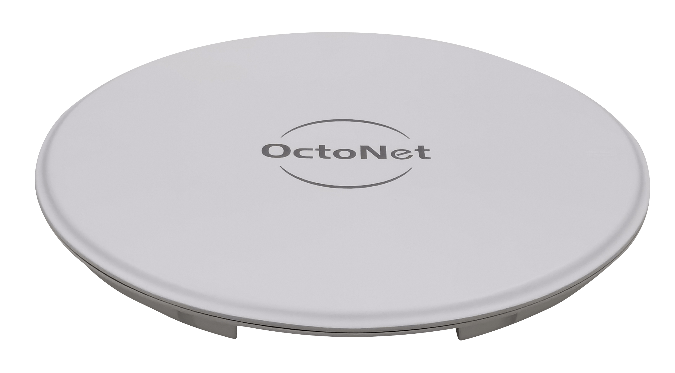Connected health
Let Nordic's expertise help you deliver the health tech your customers rely upon

Jiangsu OctoNet Technology has launched a positioning gateway that uses Bluetooth Direction Finding to help locate key items and personnel. The ‘OctoNet ON-x00-15’ employs Nordic Semiconductor’s nRF52840 SoC for high throughput or long-range Bluetooth® LE connectivity, and the nRF52833 SoC’s Angle-of-Arrival (AoA) and Angle-of-Departure (AoD) direction finding capabilities.
“This product has been designed for use in a variety of applications, including hospitals and retail,” says Xin Zhang, CTO at Jiangsu OctoNet Technology. “For instance, it can be used to connect medical devices – such as ECG machines – to a Bluetooth network, as well as offer staff locationing capabilities. In the retail industry, this product can be used to simultaneously locate products and sales personnel and transmit various sensor data back to help statistically analyze the behaviors of customers and workers.”
The nRF52833 supports both receiver and transmitter roles for AoA and AoD applications.The SoC features all of Bluetooth 5.2’s direction finding features, enabling it to calculate distance from, and direction of, a transceiver for precise locationing.

This device is available in two models – a smaller version with a single nRF52840 SoC and a larger version with two nRF52840 SoCs. By combining one or two nRF52840 SoCs with the nRF52833, the gateway can support high data throughput or long range, and multiple concurrent communication protocols (for example, Bluetooth LE, Bluetooth mesh, and Matter). The nRF52840 features a 2.4 GHz multiprotocol radio with -95 dBm RX sensitivity and 8 dBm output power for robust and reliable connectivity.
Using a wired Ethernet interface, the OctoNet ON-x00-15 is connected to the local server, which performs the locationing calculations using the data received from multiple gateways. This information can then be sent to the Cloud for further analysis. In the current model, the Ethernet connection also supplies power but the company also plans a battery-powered version of the base station. The Nordic SoCs’ low power consumption will be key in extending the battery lifetime of this version.
“We chose the nRF52840 SoC because of its strong CPU and memory configuration, as well as its ability to run various mainstream communication protocols, and transmit large data throughput,” says Xin. “The nRF52833 SoC was selected due to its excellent and stable AoA positioning capability.
“We have developed the embedded program code of the positioning gateway and the positioning tag side completely independently, and found that Nordic's SDK [Software Development Kit] examples served as a good basis during our development.
“The excellent performance, stability and reliability of Nordic's products are the best in the industry,” continues Xin. “In addition, Nordic's sales engineers and technical support engineers showed great professionalism and enthusiasm when providing support.”
Let Nordic's expertise help you deliver the health tech your customers rely upon